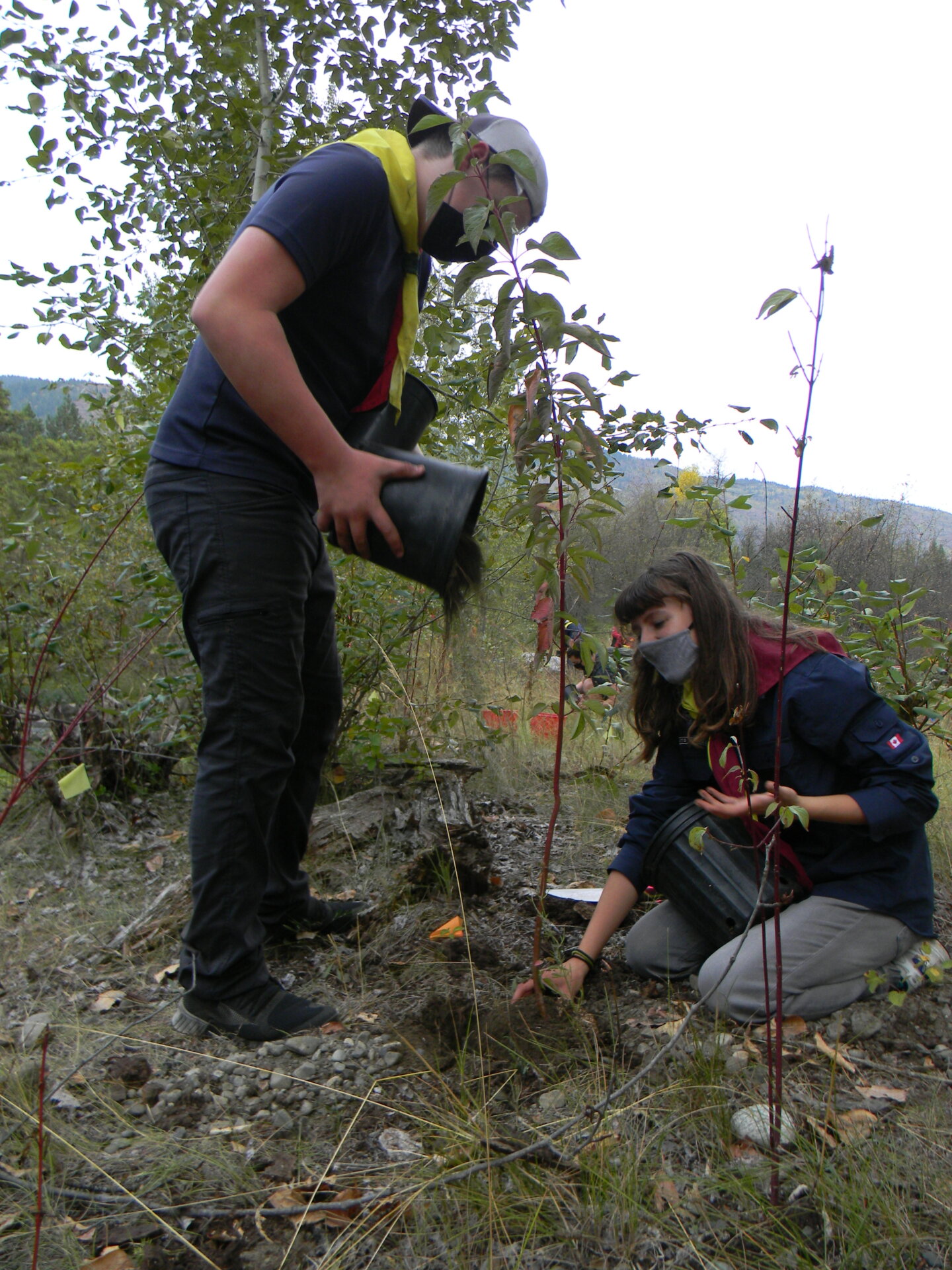For the past three years CKISS has conducted restoration efforts at three locations: Erie Lake in Salmo, Beaver Creek in Trail and Snk’mip Marsh Sanctuary just north of New Denver. For the first two years (2019-2020) the project had enthusiastic participation from over 250 volunteers who helped us plant 878 native species and remove a ton of invasive plants. This year we focused on monitoring the sites for native plant survivorship and the presence of invasive plants.
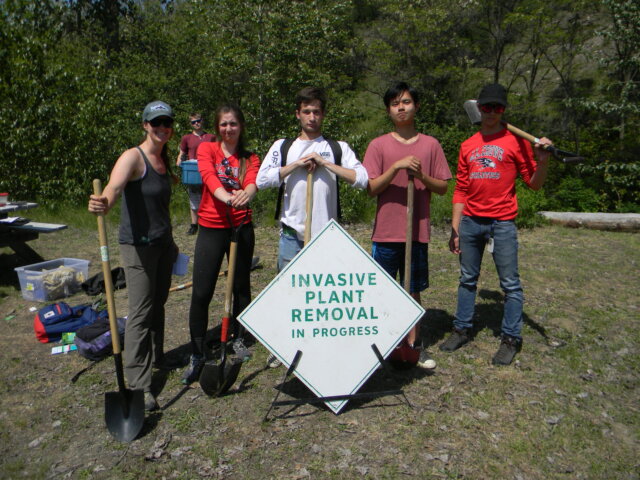
Snk’mip Marsh Sanctuary
In 2019, 250 native plugs were planted during planting events with community volunteers and schools. During the survivorship survey in 2020 we found that 165 plants survived, this is a 66% survival rate. Dominant species that survived were Red-osier dogwood, cottonwood, saskatoon, paper birch, maple and nootka rose
During the fall of 2020 local volunteers and students helped CKISS plant 400 native plugs and pots at the Snk’mip Marsh Sanctuary. Each plant was flagged for monitoring purposes. CKISS staff revisited the site earlier in the spring of 2021 and were pleased with how many of the native plants had survived, we found that 334 plants were still alive and thriving. That is a 83% survival rate, truly amazing. This proves how ecologically productive this area is! We believe that native plant revegetation will protect water quality and increase eco system health at the marsh.
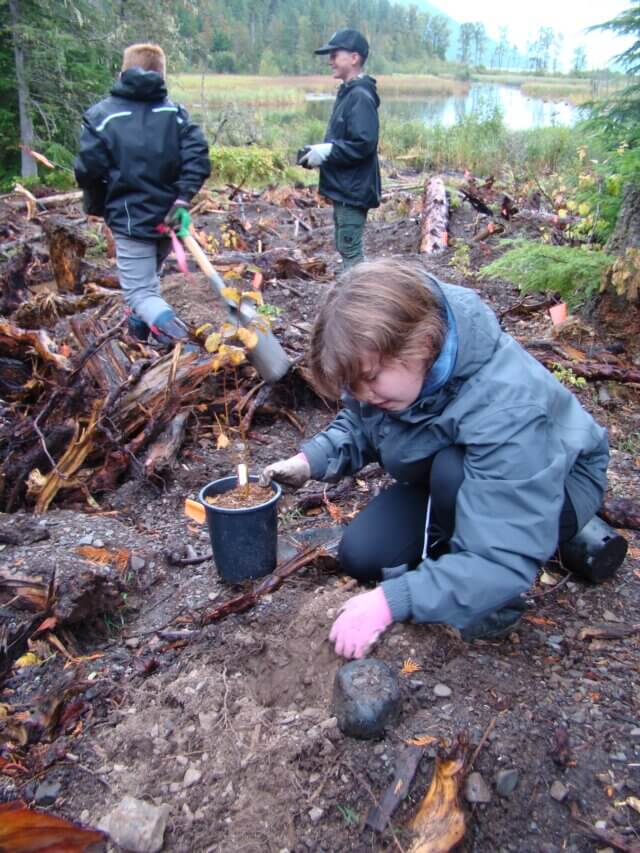
Beaver Creek Provincial Park
In 2019, volunteers from J.L Crowe Highschool and Selkirk College helped us plant 187 native species at Beaver Creek. During the survivorship survey in the Spring of 2020 we found that 73 plants survived, this is a 39% survivorship rate. This site was more challenging because it had a large infestation of invasive plants, drier conditions and compacted soil. Dominant species that survived were the black cottonwood and red-osier dogwood, Saskatoon, baldhip rose, and Oregon grape.
Volunteers and students also helped us plant 126 native species at Beaver Creek Provincial Park in the fall of 2020. CKISS staff revisited the site earlier in the spring of 2021 and found that 62 plants were still alive, this is a 49% survival rate. Knowing how dry the site was the CKISS knew for these plants to survive a hot summer ongoing watering was a must. Using funding from BC Parks, CKISS coordinated regular watering at the site in order to keep the remaining plants alive.
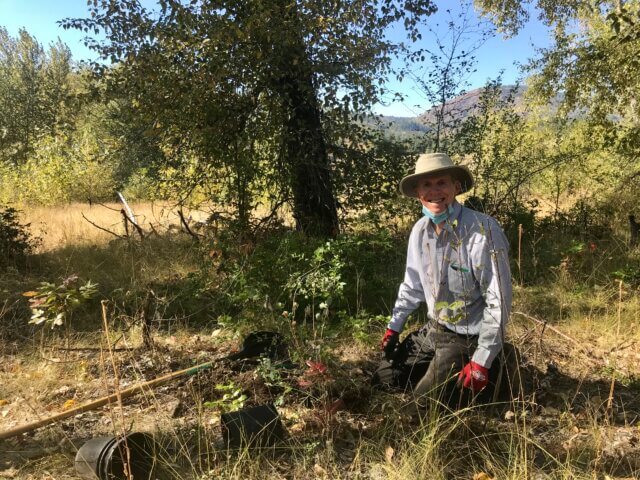
Erie Lake
Native planting did not occur at Erie Lake in 2020 due to the high water levels at the site. The high water was a concern because it made planting difficult and a potential safety risk for volunteers. In addition the site had extremely low native plant survivorship from the planting efforts in 2019 due to the high water, therefore we felt planting at this site was not a good use of resources. We did however and will continue to take students from Selkirk Collège to the site to remove invasive yellow flag iris found along the shoreline of the lake.

It has been such a pleasure to work on these restoration efforts with our wonderful volunteers, students and partners. The progress that has been made in restoring these site is very exciting and we look forward to seeing what the future holds. The ‘Riparian Restoration in the Kootenay Region’ may have wrapped up but this does not mean the restoration work is done. Native planting and community weed pull events continued at the sites in 2021 thanks to support from BC Parks, Columbia Basin Trust, The Government of B.C., Valhalla Foundation for Ecology, Kinseed, the Kootenay Native Plant Society and our keen volunteers.
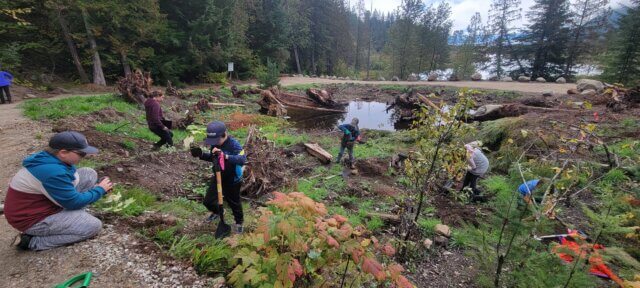
The ‘Riparian Restoration in the Kootenay Region’ was made possible with funding from Environment Canada’s Eco Action Community Funding Program and Columbia Basin Trust.



